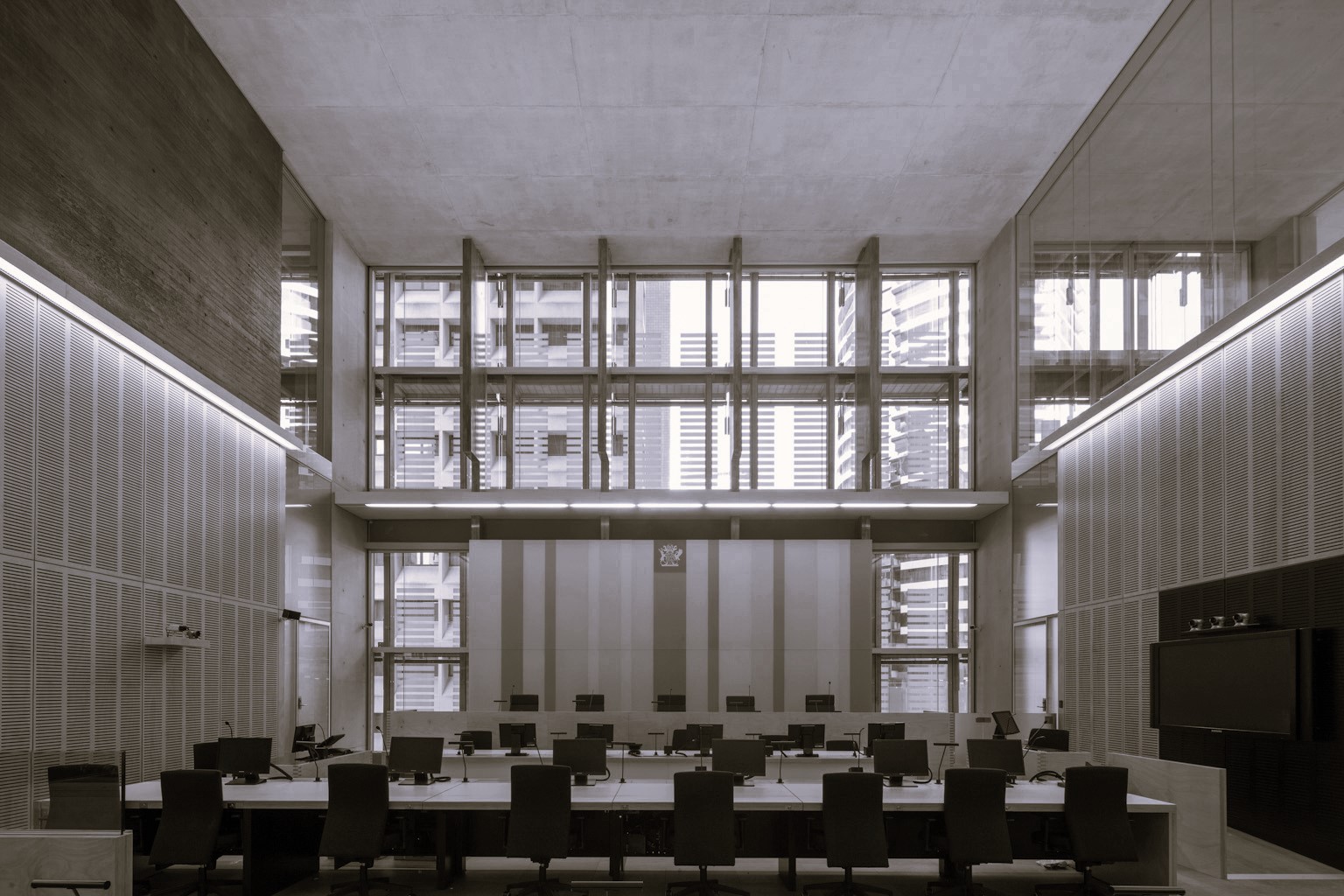Overview of the Bill
In August 2025, the Queensland Government introduced the Community Protection and Public Child Sex Offender Register Bill 2025, commonly known as Daniel’s Law, in honour of Daniel Morcombe – the Sunshine Coast teenager tragically abducted and murdered in 2003. The legislation was tabled in State Parliament as a key election promise of the new government, with a commitment to have Daniel’s Law enacted by the end of 2025.
The Bill establishes Queensland’s first public child sex offender registry, formally titled the Community Protection and Child Sex Offender Public Register, to give parents and community members access to information needed to better protect children. It will be reviewed by a parliamentary committee and is expected to become law after that review, reflecting a cautious approach to ensure the law’s provisions are sound before full implementation.
Daniel’s Law follows two decades of tireless advocacy by Daniel’s parents, Bruce and Denise Morcombe, through the Daniel Morcombe Foundation, for stronger child protection measures.
While acknowledging that “no system will ever be perfect,” the Premier stressed the intent is to give parents “the best possible chance to protect their children”, placing “the rights of victims and parents ahead of the rights of offenders”. The government frames Daniel’s Law as part of a broader “Making Queensland Safer” agenda, which also includes fast-tracking a reportable conduct scheme (to commence July 2026), a comprehensive review of the “Blue Card” working-with-children check system, and the launch of a Child Safety Commission of Inquiry. This cohesive policy package signals a robust, multi-faceted approach to child protection reform in Queensland.
Three-Tier Disclosure Framework
The centrepiece of Daniel’s Law is a structured three-tier disclosure scheme administered by the Queensland Police Service (QPS), closely modelled on Western Australia’s public offender registry system established in 2012. Each tier specifies a different level of information access, with corresponding safeguards, as follows:
- Tier 1 – Public Website: Tier 1 creates a publicly accessible website listing certain “reportable offenders” who have either failed to comply with their reporting obligations or a supervision order and whose whereabouts are unknown to police. This essentially functions as a “most wanted” list for non-compliant registered child sex offenders. The website will display the offender’s full name, photograph, and year of birth, alerting the community to individuals who are fugitives or in breach of monitoring.
- Tier 2 – Local Area Search: Tier 2 provides an online application portal through which Queensland residents can apply to view photographs of reportable offenders residing in their local area. Notably, names, exact addresses, and other personal details are not disclosed at Tier 2, only the photographs.
- Tier 3 – Child-Specific Enquiries: Tier 3 establishes a mechanism for parents and guardians to formally inquire whether a specific person who has unsupervised contact with their child is a registered child sex offender. For instance, a parent who has concerns about a new coach, tutor, neighbour, or family acquaintance who spends one-on-one time with their child can submit that person’s details for police to check against the offender registry. If the person is a reportable offender, the parent may be informed of that fact (typically, a “yes or no” answer).
Under Daniel’s Law, the Queensland Police will develop and administer these tiers via an online platform. Importantly, the legislation explicitly limits what can be disclosed.
Key Definitions and Context
Who is a “reportable offender”? Daniel’s Law builds on existing Queensland legislation for tracking sex offenders, namely the Child Protection (Offender Reporting and Offender Prohibition Order) Act 2004 (Qld).
Under that Act, a “reportable offender” is generally anyone convicted of a broad range of sexual or other serious offences against children who, after sentence, must keep police informed of their whereabouts and other personal details for a set period (often many years, up to life for the worst offenders).
Safeguards and New Offences to Prevent Misuse
Recognising the sensitive nature of publicly releasing offender information, Daniel’s Law is accompanied by robust safeguards and new criminal offences to deter misuse of the registry. The Bill creates three new offences targeting those who might abuse the information:
- Vigilantism and Harassment (Max 10 Years Imprisonment): If someone were to see an offender’s details on the Tier 1 website (or obtain any registry info via Tier 2 or 3) and then, for example, organise a mob to target that offender’s house, or post the offender’s profile on social media encouraging people to “teach them a lesson,” that person would be committing an offence under Daniel’s Law. The maximum penalty is 10 years’ imprisonment, reflecting how seriously the law takes any vigilantism.
- Likely Harassment or Intimidation (Max 3 Years Imprisonment): A related offence targets situations where a person’s conduct might not intend to harass an offender but is likely to cause harassment or fear. This lower tier offence covers more indirect misuse – it serves as a deterrent against people irresponsibly spreading registry information (for instance, forwarding an offender’s photo in a community chat group with alarmist commentary), even if they claim they didn’t mean any harm.
- Unauthorised Sharing of Registry Information (Max 3 Years Imprisonment): The third new offence prohibits the unauthorised distribution or publication of any identifying information obtained from the child sex offender register. This means that if a person lawfully accesses Tier 2 or Tier 3 information (which is provided for a specific purpose to that applicant), they must not forward it, post it publicly, or share it with others without permission from QPS.
The introduction of these offences underscores that Daniel’s Law is “not about enabling vigilante action, but about community empowerment within the rule of law.”
Advocacy and Legacy
Bruce and Denise Morcombe have been the driving force behind Daniel’s Law, and the law’s very name is a tribute to their son’s legacy. Since Daniel’s abduction and murder in 2003, the Morcombes have transformed their personal tragedy into a public mission – establishing the Daniel Morcombe Foundation and advocating relentlessly for child safety education and tougher laws against predators.
A public offender register was one of their long-standing proposals. Upon the Bill’s introduction, the Morcombes stated they are “deeply proud that Daniel’s name will live on through this legislation, giving parents across Queensland the ability to better protect their children.” They noted that “Daniel’s legacy is one of safety and awareness, and Daniel’s Law will ensure that continues.”.
Their hope is that having a Daniel’s Law in Queensland can spur similar reforms across all of Australia – effectively a national safety net so that children in every state are afforded this layer of protection.
Policy Cohesion
Daniel’s Law does not stand in isolation; it is part of a broader child protection strategy in Queensland. The government has branded a suite of initiatives under the umbrella of “Making Queensland Safer” laws. Key elements of this agenda include:
- Reportable Conduct Scheme: The government is fast-tracking the implementation of a reportable conduct scheme for organisations that work with children (expected to commence by July 2026). Fast-tracking this in Queensland means closing gaps in how institutional abuse is detected and managed, complementing Daniel’s Law which deals with offenders in the community.
- Blue Card System Review: The Blue Card is a preventative tool to screen individuals for child-related employment; however, past incidents prompted calls to strengthen it. Enhancing the Blue Card process will work in tandem with Daniel’s Law – the Blue Card screens potential caretakers before any offence (or bars those with known offences from access to kids), whereas Daniel’s Law alerts the public about offenders after conviction. Together, they form both front-end and back-end protective measures.
- Child Safety Commission of Inquiry: The government has launched a Child Safety Commission of Inquiry which suggests a top-to-bottom review of the child protection system, possibly looking at the Department of Child Safety’s practices, inter-agency coordination, and how to prevent cases of severe abuse or systemic failures.
- Interstate and National Collaboration: Given that offenders move across borders, there’s an inherent need for interjurisdictional cooperation. Queensland authorities have indicated Daniel’s Law will be integrated with or at least informed by the Australian National Child Offender Register (ANCOR), which police nationwide use to share information. Queensland’s public register will thus draw from a reliable data source.
In summary, Daniel’s Law aligns with and reinforces other child safety policies: it provides transparency and empowers the public, while other reforms strengthen institutional accountability and preventative screening. Together they represent a comprehensive approach – targeting offenders, organisations, and the community’s awareness in the shared goal of child protection.
Reaction and Implications
The introduction of Daniel’s Law has been met with widespread public support in Queensland – it delivers on a high-profile election pledge and taps into a public desire for stronger measures against child sexual abuse. Many parents and community members have welcomed the idea of knowing if dangerous predators are in their midst, describing the register as “common sense” and long overdue.
Privacy and Human Rights
The main debate is balancing community safety with individual rights. Civil liberties groups and the Queensland Human Rights Commission argue that naming offenders publicly could harm privacy and reputation, and in many cases, indirectly expose victims. Queensland’s Bill tries to reduce this risk by giving police discretion to withhold identifying information if it endangers victims. However, the Bill overrides aspects of the Human Rights Act, prioritising “child safety” over certain rights. This has led to calls for close parliamentary scrutiny and safeguards, such as requiring reporting on how the register is used.
Our view, as experienced criminal defence lawyers, is that this scheme will do little to actually protect members of the community from harm. While the intentions behind the legislation might come from a good place, the reality is that a public register of convicted child sex offenders can only serve as a means to ostracize and harm people convicted of reportable offences, which covers a broad spectrum of offences (including “non-contact” offending such as CEM offences).
The submission from the Queensland Law Society on this Bill observed:
Effectiveness and Public Safety
Research suggests public offender registries have little impact on reducing reoffending. Some evidence shows a small deterrent effect for potential first-time offenders, but not for those already convicted. In some cases, stigma may even increase reoffending. Recidivism among child sex offenders is lower than average but still carries severe consequences. Critics warn against over-reliance on the registry, noting that most offenders are not known to authorities and will never appear on the list. Authorities stress that the registry is an additional tool, not a complete solution, and public education remains crucial. There are also risks of offenders avoiding compliance due to fear of exposure, which could undermine police monitoring.
Legal and Social Implications
Legally, courts and correctional systems will need to incorporate new disclosure rules, and police will require resources and training to manage the registry. Litigation is likely as offenders may challenge disclosure decisions. Socially, the law may raise awareness of child protection but also create risks of vigilantism or misuse. Authorities emphasise the importance of responsible use and plan to enforce penalties for misuse. Public exposure can hinder offender rehabilitation, increasing risks of reoffending. Queensland’s system seeks to limit this by targeting only high-risk or non-compliant offenders rather than listing all. Overall, the law is cautiously welcomed: supported by the public and victims’ advocates, but questioned by legal and academic voices who call for careful monitoring and integration into broader child protection strategies.
Insight & Commentary
For Legal Professionals
Legislative Innovation with Caution
Daniel’s Law amends the Child Protection (Offender Reporting and Offender Prohibition Order) Act 2004 to introduce a public offender register. It explicitly overrides the Human Rights Act 2019 (Qld), only the second time such an override has been used, signalling its political significance. The override has a five-year sunset, requiring review. The Bill also limits judicial review, allowing challenges only on narrow grounds (jurisdictional error). New misuse offences with heavy penalties may raise issues around intent and enforcement, particularly for community members or groups who share information.
Privacy and Human Rights Considerations
The law pits child safety against offender rights. By invoking the override, the government avoided fully defending its compatibility with human rights protections like privacy and fair trial. Critics may argue narrower alternatives could achieve the goal. Privacy law conflicts are resolved by authorising disclosure through legislation, with secondary misuse offences reinforcing limits. Offenders may claim double punishment or stigma, though courts typically classify such measures as regulatory, not punitive.
Potential Precedent for National Adoption
Queensland joins WA, SA, and Tasmania in implementing a public register, increasing pressure for national consistency. Without coordination, offenders could move across states and evade public notification. Past federal proposals for a national register stalled due to lack of consensus and effectiveness concerns, but renewed momentum is likely. A patchwork approach risks confusion, making harmonization or a national portal an eventual necessity.
For the Public
Practical Use of the Register
Daniel’s Law gives parents and community members a way to check if known child sex offenders live nearby. The register has three tiers: high-risk absconders (Tier 1), local offenders (Tier 2), and individual checks (Tier 3). The tool is designed for vigilance. It does not list all risks—many offenders are never convicted—so education and observation remain essential.
Responsible Use
Learning that an offender lives nearby may provoke fear or anger, but harassment or vigilantism is illegal and counterproductive. Misusing information risks prosecution and can destabilise offender monitoring. The public should instead use the register to inform precautions, report suspicious behaviour, and support lawful monitoring by police.
Community Education and Support
The law provides an opportunity for broader child protection education. Parents should have age-appropriate safety conversations with children. The absence of offenders in the area should not create complacency, and the presence of one should prompt vigilance, not panic. The registry is one layer of defence, useful if it prevents even one new offence, provided the public uses it calmly and constructively.
FAQs
Does this apply to people who are no longer reportable offenders, or who were never reportable offenders?
No, it only applies to current reportable offenders. People who have completed their reporting requirements, or those who were convicted of offences prior to the reportable offender legislation coming into effect in 2004, are not captured by this new legislation.
The Explanatory Notes are explicit on this point: “Section 8 of the CPOROPOA outlines when a person stops being a reportable offender. The Police Commissioner must not disclose information where a person is no longer a reportable offender.”










